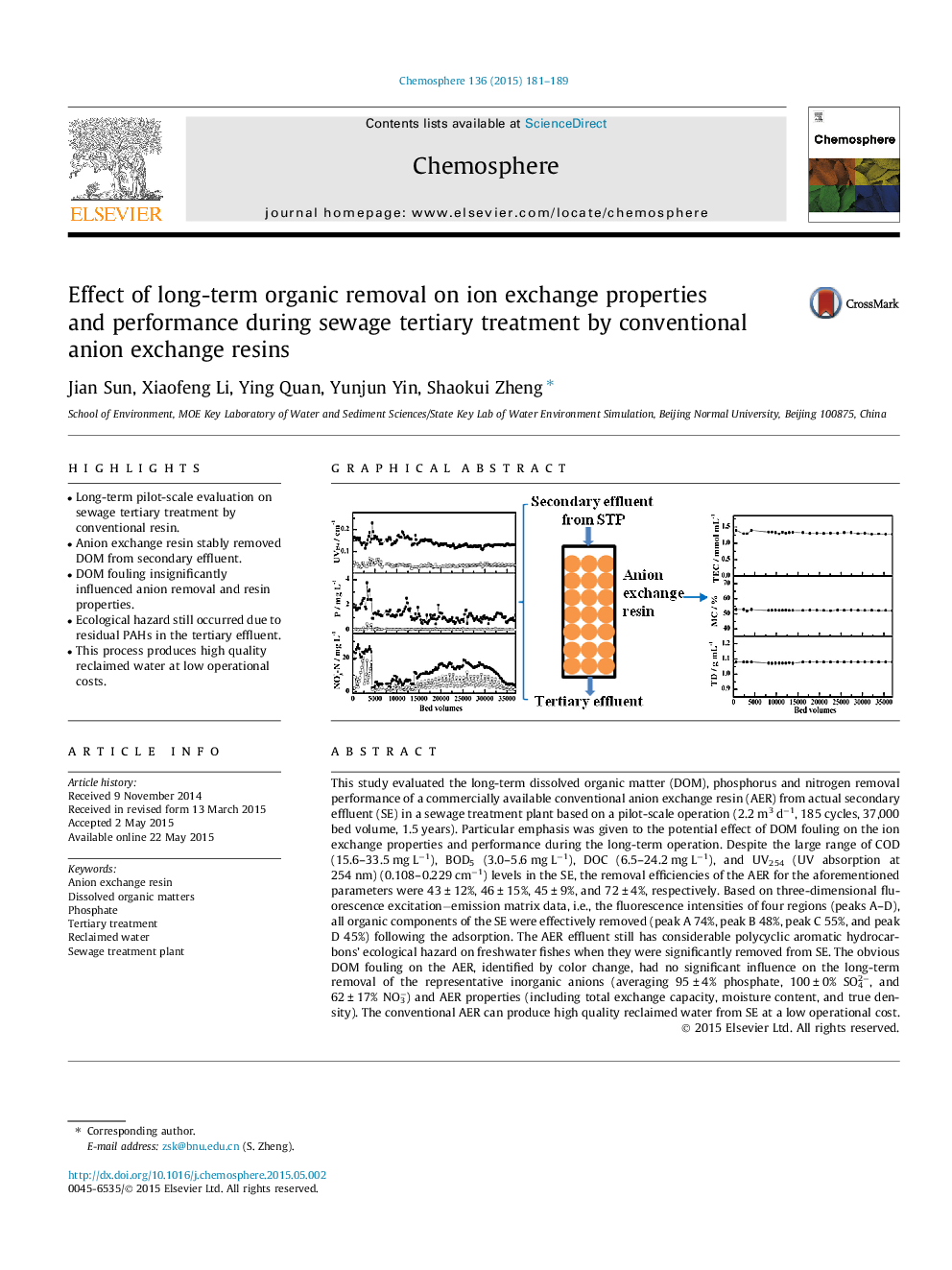| کد مقاله | کد نشریه | سال انتشار | مقاله انگلیسی | نسخه تمام متن |
|---|---|---|---|---|
| 4408273 | 1618835 | 2015 | 9 صفحه PDF | دانلود رایگان |
• Long-term pilot-scale evaluation on sewage tertiary treatment by conventional resin.
• Anion exchange resin stably removed DOM from secondary effluent.
• DOM fouling insignificantly influenced anion removal and resin properties.
• Ecological hazard still occurred due to residual PAHs in the tertiary effluent.
• This process produces high quality reclaimed water at low operational costs.
This study evaluated the long-term dissolved organic matter (DOM), phosphorus and nitrogen removal performance of a commercially available conventional anion exchange resin (AER) from actual secondary effluent (SE) in a sewage treatment plant based on a pilot-scale operation (2.2 m3 d−1, 185 cycles, 37,000 bed volume, 1.5 years). Particular emphasis was given to the potential effect of DOM fouling on the ion exchange properties and performance during the long-term operation. Despite the large range of COD (15.6–33.5 mg L−1), BOD5 (3.0–5.6 mg L−1), DOC (6.5–24.2 mg L−1), and UV254 (UV absorption at 254 nm) (0.108–0.229 cm−1) levels in the SE, the removal efficiencies of the AER for the aforementioned parameters were 43 ± 12%, 46 ± 15%, 45 ± 9%, and 72 ± 4%, respectively. Based on three-dimensional fluorescence excitation−emission matrix data, i.e., the fluorescence intensities of four regions (peaks A–D), all organic components of the SE were effectively removed (peak A 74%, peak B 48%, peak C 55%, and peak D 45%) following the adsorption. The AER effluent still has considerable polycyclic aromatic hydrocarbons’ ecological hazard on freshwater fishes when they were significantly removed from SE. The obvious DOM fouling on the AER, identified by color change, had no significant influence on the long-term removal of the representative inorganic anions (averaging 95 ± 4% phosphate, 100 ± 0% SO42−, and 62 ± 17% NO3−) and AER properties (including total exchange capacity, moisture content, and true density). The conventional AER can produce high quality reclaimed water from SE at a low operational cost.
Figure optionsDownload as PowerPoint slide
Journal: Chemosphere - Volume 136, October 2015, Pages 181–189
